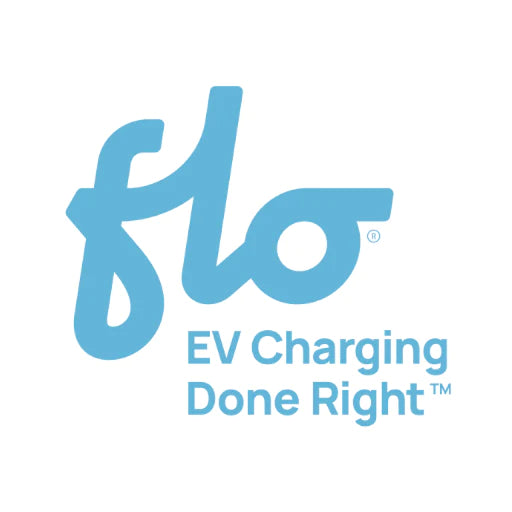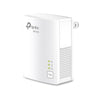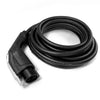FAQ
About FLO Home
How long will it take to charge an electric vehicle with a FLO Home charging station?
It all depends on your battery’s charge status upon connection. A Level 2 charging station like FLO Home will provide up to 30 kilometres of range per hour of charging and will charge your car up top 5 times faster than a 120 V outlet.
How much electricity will the FLO Home charging station use to charge my vehicle?
On average, each kilometre of EV travel requires 200 Wh of energy in an electric vehicle.
Can the FLO Home charging station be installed outside?
FLO Home can be installed inside or outside any house. It is perfectly adapted for Canadian winters thanks to its NEMA 4X aluminum casing and is certified to operate at temperatures ranging from -40°C to 50°C.
Can I install the FLO Home charging station myself?
The station must be installed by a licensed electrical contractor. Installation costs generally vary between $500 and $1,000.
Find a licensed electrical contractor:
Alberta: Consult the Electrical Contractors Association of Alberta‘s directory
British Columbia: Consult the Electrical Contractors Association of BC‘s directory
New Brunswick: Consult the Electrical Contractors Association of NB‘s directory
Ontario: Consult the Electrical Contractors Association of Ontario‘s directory
Québec: Consult the Corporation des Maîtres Électriciens du Québec‘s directory
What’s the difference between the FLO Home X5 and G5 models?
The FLO Home X5 is connected; the G5 is not. Both models are just as sturdy and reliable, and are built with the same high-quality components.
What’s the advantage of having a connected charging station?
A network connection allows users to configure smart features like Charging Schedule, and view usage data on a secure online portal. Connectivity also allows the FLO team to monitor remotely the station’s status and provide real-time technical support, ensuring total peace of mind to EV drivers.
What is the charging station’s lifespan?
The FLO Home charging station is guaranteed for three years, but it is designed to last over 10 years thanks to its top-quality components.
About the FLO network
Where can I find FLO network charging stations?
FLO operates thousands of public charging stations. FLO works with numerous partners like cities, retailers, employers and real-estate developers to extend its charging network.
How can I locate FLO network charging stations?
You can locate charging stations online at flo.ca or via the FLO mobile app for iOS and Android.
How much does it cost to charge on the public network?
Rates are set by charging station owners and may vary from one site to another depending on the type of charging station, the billing method (per hour or per session) and the location. Rates are clearly displayed on each station’s screen and can also be viewed online or on the FLO mobile app.
Although rates are set by individual station owners, FLO is a strong proponent of rate standardization and issues recommended rates for each province in order to provide guidelines. These standardized rates allow us to maintain and improve the charging infrastructure as well as to provide a reliable and consistent experience to EV drivers throughout the network, while still keeping EV charging prices very competitive compared to fuel prices. Private station owners who offer charging as a customer amenity can determine different rates and usage policies. Charging stations owned and operated by FLO follow these recommended rates.
Recommended rates per province
Region Fast charging Standard charging
Per hour Per hour Per session
Quebec, British Columbia, Maritimes $15 $1.25 $2.50
Ontario, Prairies, Territories $20 $1.50 $4
What’s the difference between billing modes?
Station owners are free to select the billing method that is best suited for their location.
The most common billing mode across the FLO network is hourly, which allows site owners to charge based on the amount of time the electric vehicle is connected to the charging station. Some site hosts choose to stop the clock when the vehicle reaches a full charge (per charging hour mode); for others, the clock keeps running until the driver disconnects from the station entirely (this can help prevent overstays at public charging stations).
FLO stations can also be configured to charge consumers by session, in which users are charged a set fee for the use of the charging station. This mode is best suited for those sites where station turnover is not a concern, but where the site owner still wishes to monetize the station and restrict access to paying customers.
What types of charging stations are available on the FLO network?
The FLO Network offers standard (Level 2) charging stations that provide up to 30 km of range per hour, as well as fast chargers that provide up to 250 km of range per hour.
Are the charging stations compatible with all types of vehicles?
The FLO Network’s Level 2 charging stations are compatible with all electric and plug-in hybrid vehicle models. Fast chargers are compatible with vehicles equipped with CHAdeMO or SAE Combo charging ports. Learn more about compatibility.
What is the FLO access card used for?
The FLO card enables users to authenticate themselves at charging stations, start charging sessions and pay for their sessions using credits previously transferred to their FLO account.
How can I get a FLO access card?
To get your FLO access card, create a FLO account or log in to your account and click “Order a card”. Your card will be delivered by mail and will already be associated with your account.
A $15 charge applies when ordering a FLO access card. Please note that you will have to transfer funds to your account using a credit card before using your FLO access card.
What is the FLO mobile app used for?
The FLO mobile app for iOS and Android helps users find available public charging stations and allows them to pay for their charging sessions using credits previously transferred to their FLO accounts, manage the parameters of their FLO Home charging stations and access their usage data from public stations as well as their residential charging station.
 CAN FR
CAN FR USA EN
USA EN
 FLO Home X5 Carbon (Black)
FLO Home X5 Carbon (Black)
 PowerLine Adapter
PowerLine Adapter
 Replacement Cable & Connector Set
Replacement Cable & Connector Set